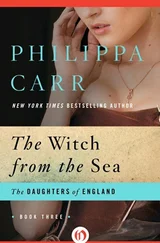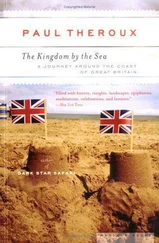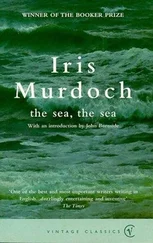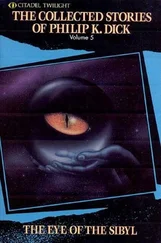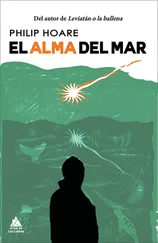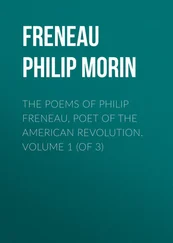At the bottom of the garden – beyond the summer house whose interior is festooned with ancient spiders’ webs, each dangling white drop holding a mummified fly – is a crumbling potting shed. Recently, a sudden hailstorm caught me out in the garden, and I dived into the shed for shelter.
It was the first time I’d set foot inside the place for months, maybe even years. The roof was rotten and yawning to the skies in two places, as though a bomb had hit it; everything was decaying with lost summers and long-dead flowers. A pair of deflated bikes stood stacked against the tilting walls. Plant pots tottered in towers. Bamboo canes which once guided sweet peas to the sun gathered in the corner, the twine still wound around their knotty rings. The entire edifice was slowly decomposing. As I stood there, still in the silence save for the rattle on what was left of the roof, the hailstones poured in through the holes like sand in an egg timer, threatening to fill the interior with granulated ice.
Behind the shed a high privet hedge, blowsy like green clouds, hides an alleyway where my brothers would collect grass snakes, slithering in a bucket. Hedgehogs still shuffle out of it at night, leaving paths in the grass. At the end of the cutway, across the road, lies what is left of the common, a narrow, tree-filled valley dipping down to a stream, from where I hear the call of a tawny owl at night, drifting over the roofs, as if it might be caught by a satellite dish.
One afternoon my father, working on his much-manured vegetable patch, called to us to see a slow worm on the lawn; it must have slithered out from the compost heap. For some reason, I picked up a spade and drove it down on the lizard, slicing it in half. I remember being surprised by the blood that oozed out of the bisected reptile.
What had I expected? Did I think it was one of my rubber toys? Fascinated and horrified by what I’d done, I stood there, staring stupidly. I still regret it. On only two other occasions have I been personally responsible for the death of an animal. One was a hedgehog that I once found with a growth on its eye like a bloated pale pea. I drowned it in a bucket of water, holding it down, feeling its tight-balled body open and close, briefly. The last was rather more recent.
I first saw it out of the corner of my eye, a white blur on the beach. After I’d swum I saw that the bird was still there.
It was nothing unusual: a black-headed gull. As I walked towards it, it ran off rather than took to the air. Then I saw its wing tip hanging, obviously and dramatically broken. Had a dog or a fox done that? Every now and then it tucked its head round to the injured site, pecking at the disconnected bones, unable to understand. Why couldn’t it do what it usually did? It could not comprehend the malfunction. I could, but I ignored it, and cycled home, thinking determinedly about lunch instead.
A year or so before, I’d been cycling along the beach when I saw a pair of mute swans, a common enough sight here, running their belisha-beacon beaks through the shallows. The Nordic historian Olaus Magnus wrote in 1555: ‘The swan, as everyone certainly knows, is a placid, good-natured bird.’ He noted that it derives its name, Cygnus , from its singing, sounding sweetly from its long, curving neck, although he added that in old age, it sings with one wing over its head, its swansong ‘as it departs from life. Plato says that it sings not from sadness but from joy as its end draws near.’ Like the ermine, said to prefer to die rather than soil its white winter coat, the swan is pledged to maintain its whiteness, as immaculate as the newly laundered shirt of an African schoolchild.
But one of these swans was not preening itself. It was tugging with its wings at a near-invisible thread: a micro-filament of discarded fishing line which threatened to trap the bird till it was trussed up in its own panic.
A man with a weather-beaten face was also looking on, concerned. I suggested we try and do something. We waded out towards the pair, but they moved off, out of reach. My comrade, as I now regarded him, made a suggestion. He owned a rib, and would fetch it from the pound. Moments later we were in the boat, in pursuit of a swan. The powerful outboard motor took us out into the channel. Our prey, meanwhile, was doing its best to evade us. Circling to cut off its escape route, we drew close to the entangled bird. Ignoring what I’d been told – how a swan can break a human limb with its wings – I leaned over and gathered it up in my arms.
I felt its whiteness in my embrace, sturdy and warm and downy. It didn’t struggle at all. Indeed, it seemed quite at home, although that may have been merely fear: captured animals will play dead, as a last resort. It was like holding a living musical instrument – or, perhaps, putting one’s arm around a ballerina. Its head swivelled to face me indignantly. I thought of Alice’s flamingo mallet as I gripped the slender, muscular neck. My fellow rescuer pulled out his penknife and cut the line. It was all over. I opened my arms and felt the bird’s tension release and the life return to its body. It swam off for a few yards, stretched its wings, turned, and honked.
Only later, reading Tag Barnes’s Waterside Companions , would I see another side of the story. Barnes, an angler since he was a boy, wrote his book in 1963 to enlighten fellow fishermen about the creatures they might see around them. Moorhens, cormorants and grebes all get their admiring page or two; even water voles, toads and coypu are given their due. But when it comes to the swan, Barnes appears to lose his temper: ‘I simply bristle with annoyance when one moves into my swim.’ He certainly does not agree with Plato’s lyrical tales. Swans, he says, are ‘the most aggressive, persistent and arrogant birds we have and can be extremely dangerous’.
It was refreshing to read natural history from the predator’s point of view; in Barnes’s words the mute animal becomes almost malevolent. No amount of stone-throwing or shooing would deter these waterborne thugs, he says. ‘They will often hiss back at the “shooer” and sometimes threaten him with violence.’ He suggests that dirty water might be thrown over the miscreants – perhaps on the basis that these vain creatures would be humbled by their besmirched plumage. His other remedy is to ‘cast a line over their backs’. Is that what happened to ‘my’ bird? Barnes convicts himself in his final blast, as deliberate as the second discharge from a twelve-bore. Having admitted that swans eat only aquatic plants, he concludes: ‘I can recommend the cygnet as being a really tasty dish!’
Faced with the plight of the gull and its broken wing, I returned to the beach that afternoon. I’d last seen the bird running into the bushes, seeking shelter from predators; I’d watched other injured birds retreat into the same undergrowth, as though they were choosing a place to die. But now it was back on the shore. Dumbly, it declined to accept its fate. For a moment I thought that somehow its wing had repaired itself, miraculously snapping back into place like a dislocated shoulder. But it hadn’t, and it was clear that I had to do something.
I crept up on the gull and cornered it against the sea wall, then threw my swimming shorts over its head and grabbed its flapping body. Like the swan, it made surprisingly little resistance, only a pathetic attempt to peck my fingers.
It was odd to see something so familiar at such close quarters: the slim elegance of its beak, long and crimson and curved to a point; the sharpness of its dusty black-brown hood defined against the whiteness of its body. It was one of the most common wild animals around, yet close to, it appeared a miracle of perfection; a perfection now irrevocably marred by the snapped bones I could feel as I examined its wing. It would never fly again, although its beady eyes looked up to the sky.
Читать дальше


